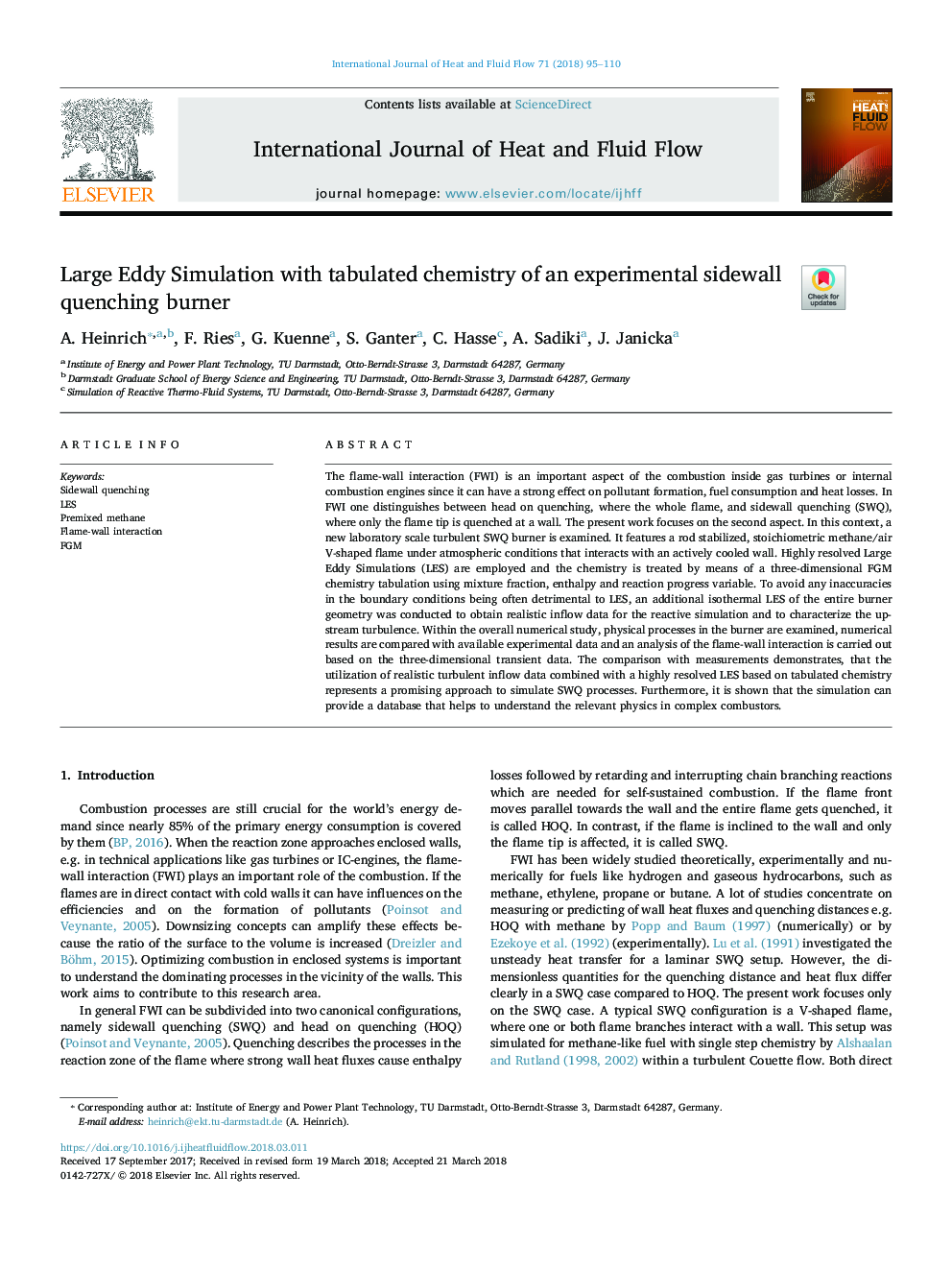| Article ID | Journal | Published Year | Pages | File Type |
|---|---|---|---|---|
| 7053472 | International Journal of Heat and Fluid Flow | 2018 | 16 Pages |
Abstract
The flame-wall interaction (FWI) is an important aspect of the combustion inside gas turbines or internal combustion engines since it can have a strong effect on pollutant formation, fuel consumption and heat losses. In FWI one distinguishes between head on quenching, where the whole flame, and sidewall quenching (SWQ), where only the flame tip is quenched at a wall. The present work focuses on the second aspect. In this context, a new laboratory scale turbulent SWQ burner is examined. It features a rod stabilized, stoichiometric methane/air V-shaped flame under atmospheric conditions that interacts with an actively cooled wall. Highly resolved Large Eddy Simulations (LES) are employed and the chemistry is treated by means of a three-dimensional FGM chemistry tabulation using mixture fraction, enthalpy and reaction progress variable. To avoid any inaccuracies in the boundary conditions being often detrimental to LES, an additional isothermal LES of the entire burner geometry was conducted to obtain realistic inflow data for the reactive simulation and to characterize the upstream turbulence. Within the overall numerical study, physical processes in the burner are examined, numerical results are compared with available experimental data and an analysis of the flame-wall interaction is carried out based on the three-dimensional transient data. The comparison with measurements demonstrates, that the utilization of realistic turbulent inflow data combined with a highly resolved LES based on tabulated chemistry represents a promising approach to simulate SWQ processes. Furthermore, it is shown that the simulation can provide a database that helps to understand the relevant physics in complex combustors.
Keywords
Related Topics
Physical Sciences and Engineering
Chemical Engineering
Fluid Flow and Transfer Processes
Authors
A. Heinrich, F. Ries, G. Kuenne, S. Ganter, C. Hasse, A. Sadiki, J. Janicka,
